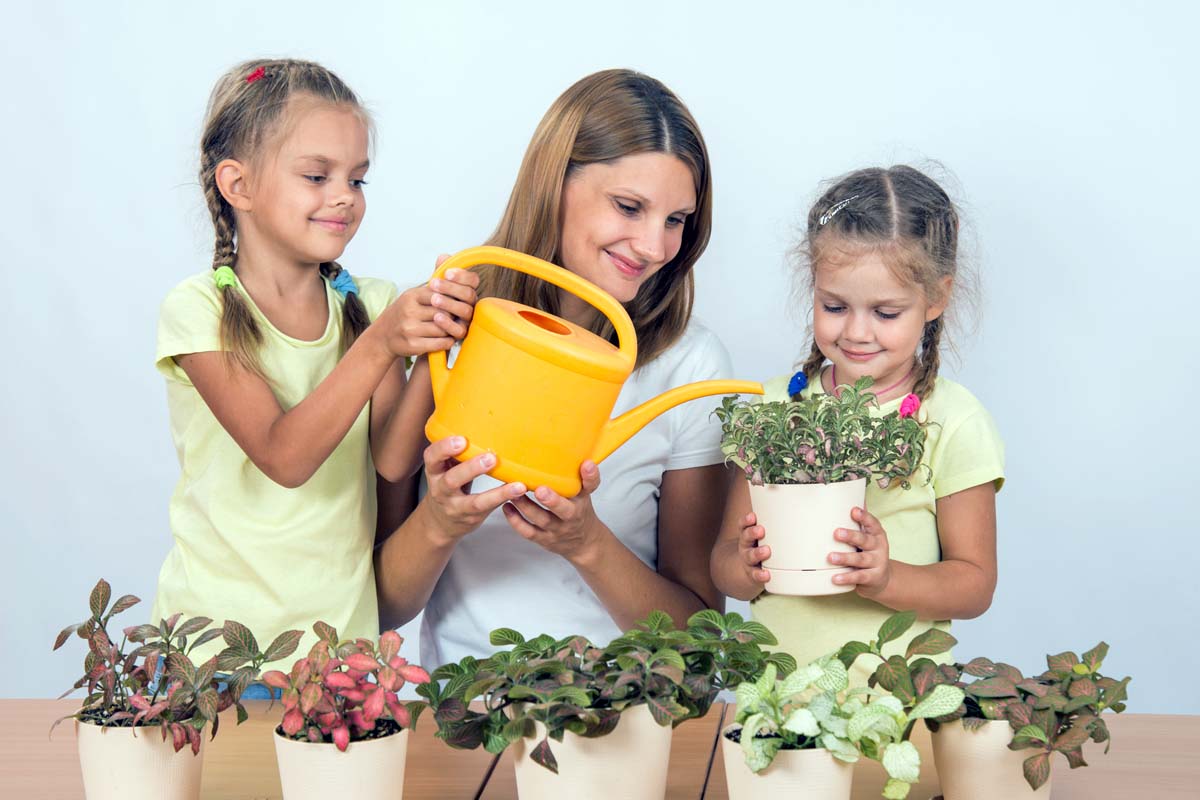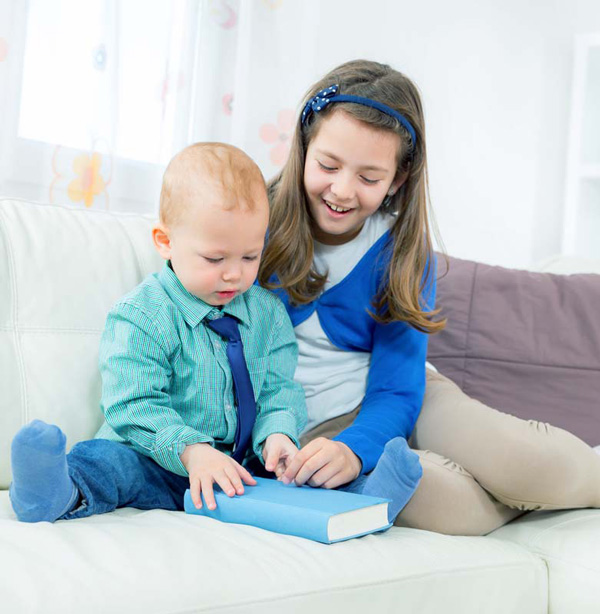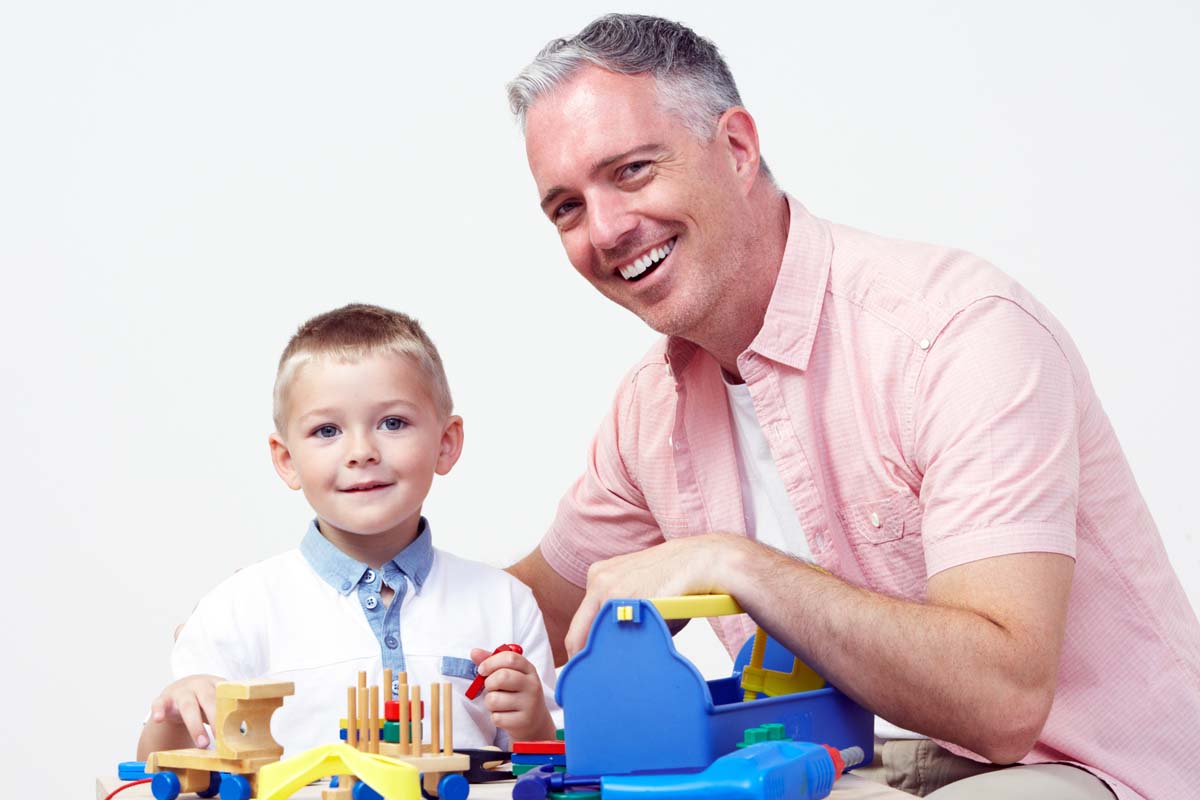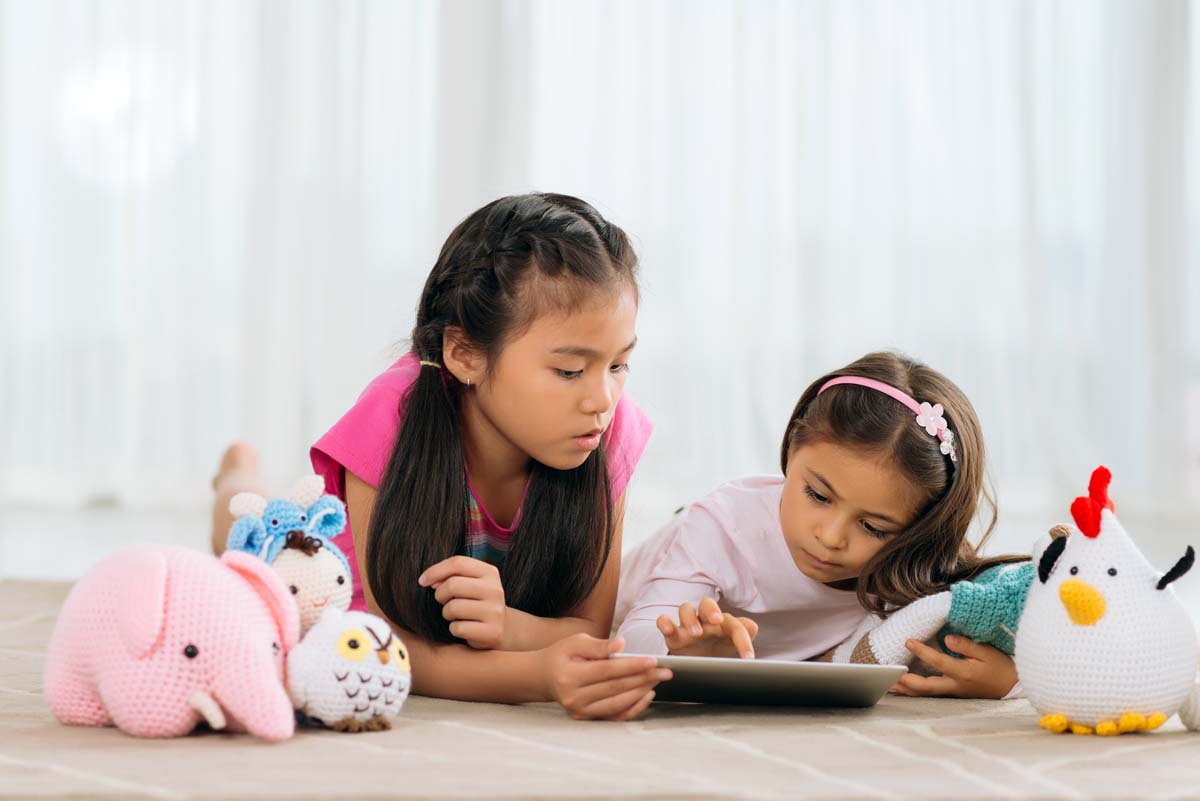‘Family Stories’ – Understanding These ‘Stories’ to Support Wellbeing
The social-emotional wellbeing of children has a major impact on overall growth and development, including academic skills. Most importantly, children’s developing self-esteem and confidence influences the development of a positive and secure sense-of-self and identity, which contributes to their wellbeing (11,23).
The Early Years Learning Framework (EYLF) and the National Quality Framework (NQF) have both acknowledged the importance of a positive social-emotional wellbeing. They emphasise the role teachers have and in developing a collaborative relationship between teachers, children and their family to support the wellbeing of all (7,23).
‘Family Stories’
To work with families effectively and build collaborative partnerships ‘FAMILY STORIES’ need to be acknowledged and respected – their voices need to be shared and heard.
‘Family stories’ include experiences in varying contexts (such as in the home, cultural/religious places) in interaction with various family members, friends and others. It also includes family experiences in professional intervention (such as speech therapy) or medical contexts.
Understanding these ‘family stories’ widens and informs teachers’ knowledge and understanding of contextual issues and factors that could be influencing the family and children (10). In turn, this informs teacher practices that can support children in developing a secure and positive emotional development. As a result, supporting both children’s and the family’s wellbeing and mental health.
The Effect of Labels and Stigma – Importance of Collaborative Partneships
Partnerships that focus on interpersonal relationships and the idea of interdependence creates more positive, trusting and effective relationships (24). This has been found to lead to families being more involved in their children’s education, which results in both the positive wellbeing of children and their family (7,23).
Unfortunately, experiencing mental health issues, whether by children or their family, can lead to labels being applied. This can then result in stigma being formed in various contexts and in different relationships including informally (among society, friends and family) and in more formal contexts (such as in early childhood services) (5,9).
Even more, labels and stigma have been found to hinder families from seeking help – one of the reasons for about a quarter of families not seeking professional intervention (1,5,9). A finding that impacts immediate and future development and wellbeing.
Teachers have an important role in assisting to reconstruct labels and stigmas as they become the bridge for families to connect them to professional or medical support, while also addressing these issues through play and discussion during the day with the children.
Reflecting on Professional Intervention Practices and How it Informs Teachers’ Beliefs and Practices
Taking research around oppositional defiant disorder (ODD) as a focus for reflection around social-emotional wellbeing, we can also reflect on how this research can inform teachers’ beliefs and practices.
Findings from various ODD intervention studies (17,19) have focused around access and utilisation of services, among other areas. It was found that there were multiple barriers to service access including the following,
- Stressors and obstacles (e.g. illness and transportation to the service).
- Treatment demands (e.g. the length and commitment of treatment at the service).
- Perceived relevance.
- Parental and contextual factors (e.g. being a single-parent family, neighbourhood, parenting style, maternal depression).
Bernal et al. (3) agree with these findings, and further supports the emphasis by Lavigne et al. (19) on the importance of culture and ethnicity, pointing out the necessity to consider and develop culturally sensitive interventions.
- The main points identified by Bernal was the call for a reflection on the differences in values that the mainstream culture has on already developed interventions.
-
-
- That is, interventions that have been employed to assist families from diverse backgrounds who hold different, and sometimes opposite cultural values, such as interdependence and ‘familialism’ – values that are of high importance and a part of many cultures.
-
-
- When interventions and relationships did not consider various elements, such as language-appropriateness, client-therapist relationship and the importance of the therapist in understanding the values, beliefs and customs families found the intervention ineffective and unsupportive to their needs and goals.
In the same way, when teachers’ relationships with children and families do not consider these cultural elements this has been found to affect the support that families receive and feel that they receive or need. This is because the attitudes that teachers hold will affect how they will engage with and respond to families, and thus the type of support and relationship they develop with families.
However, when teachers take the time to listen to families’ stories and acknowledge, embrace and respect these various cultural elements in their personal interactions, as well as in the program and setting approaches, relationships and collaborative partnerships can be built between families, teachers and early childhood (EC) service.
Implications for Teachers and EC Services
Based on various research of ODD intervention approaches, the following are recommendations for teaching practice and strategies to support children’s social and emotional wellbeing.
* Build relationships with children by getting to know the charisma and character of each child, as well as their strengths, areas of need, dis/likes – that is, the uniqueness of each child.
-
-
-
- Consider and include this knowledge of each child when setting up a structured, but flexible routine, which will provide for an environment that is predictable and supportive. This will build the foundation for a partnership that honours and respects the child and the family (2,4,14,18).
-
-
*Arrange the environment and provide a program that considers the various interests, skill levels and learning styles of each child.
-
-
-
- This includes a varied level of challenge and different approaches to learning. In addition, activities that require the use of executive functioning skills (ie. cognitive self-regulation), such as problem-solving and working memory. In this way, children are given opportunities to practice skills that enable them to be aware of their own emotions and how to express them effectively (8,14,16).
-
-
*Create environments that positively encourage and acknowledge children for their efforts in relation to all areas, including their efforts in emotional situations.
-
-
-
- Rather than reprimand or discipline, teachers can use these times as moments to collaboratively work together with children to solve problems they encounter.
- Take advantage of the ‘teachable moments’. These are moments to develop skills, but also to build strong relationships with the children to contribute to the positive wellbeing (12,13,14,23).
- Don’t react to behaviour. Instead, be proactive in identifying possible areas children need support in, and walk with children in their need.
-
-
*Reconstruct labels and stigma using Augmentative and Alternative Communication (AAC) (6,20).
-
-
-
- This enables all children to learn about and respect the different ways they can communicate, and understand how others communicate differently and in various situations and contexts.
- By learning alternate ways to communicate, such as using Key Word Sign, music and other art forms this creates a sense of community within the class, which is an important strategy that builds relationships and creates a sense of belonging and empowerment (4,7,18).
-
-
*Use of ‘bibliotherapy’ that uses literature as a strategy – that is, the story is used as a focal point for learning. In doing so, it allows children to be detached from reality and provides for more open discussion about their own feeling and emotions.
-
-
-
- They can connect with characters in the story and then apply the generated alternative responses to their own lives (15,21).
- From the literature used, children can also use these scenarios for role-play and other imaginative play opportunities where the ‘what-if’ provides a place where they can escape reality and be whatever and whomever they want to be. That is, where they can be control (22). In this way, they extend on their skills, understand their own and others’ emotions, and in the process build their social and emotional wellbeing.
-
-
*Support and facilitate joint decision-making with families. This is an important part of supporting children’s social-emotional wellbeing.
-
-
-
- Have families involved in developing the program. This will result in positive outcomes for the collaborative nature of the partnership and for their child in also being more involved in the decision-making process of the program (4).
- Invite families to share their talents and interests, such as art, music and sports to create a sense of community where children and families are likely to feel more open and welcome to participate and engage in the EC service and in their child’s education. This in turn builds more collaborative relationships between families and teachers.
-
-
REFERENCES
(1) Allday, R.A., Duhon, G.J., Blackburn-Ellis, S., & Van Dyke, J.L. (2011). The biasing effects of labels on direct observation by preservice teachers. Teacher Education & Special Education, 34(1), 52-58.
(2) Bagdi, A., & Vacca, J. (2005). Supporting early childhood social-emotional wellbeing: The building blocks for early learning and school success. Early Childhood Education Journal 33(3), 145-150.
(3) Bernal, G., & Saez-Santiago, E. (2006). Culturally centred psychosocial interventions. Journal of Community Psychology,34(2), 121-132.
(4) Commonwealth of Australia (CoA). (2012a). Kids matter early childhood component 1: Creating a sense of community. Literature view.
(5) Commonwealth of Australia (CoA). (2012b). Kids matter early childhood component 4: Helping children who are experiencing mental health difficulties. Literature view.
(6) Cress, C.J., & Marving, C.A. (2003). Common questions about AAC services in early intervention. Augmentative and Alternative Communication, 19(4), 254-272.
(7) Department of Education, Employment & Workplace Relations (DEEWR). (2009). Belonging, being and becoming: The early years learning framework for Australia.
(8) Dunsmore, J.C., Booker, J.A., & Ollendick, T.H. (2013). Parental emotion coaching and child emotion regulation as protective factors for children with oppositional defiant disorder. Social Development, 22(3), 444-466.
(9) Graham, A., Phelps, R., Maddison, C., & Fitzgerald, R. (2011). Supporting children’s mental health in schools: Teacher views. Teachers and Teaching: Theory & Practice, 17(4), 479-496.
(10) Grace, R. (2013). Developmental disability. In J. Bowes & R. Grace (Eds.), Children families and communities: Contexts and consequences (4th ed., pp.39-57). South Melbourne: Oxford University Press.
(11) Green, B.L., Malsch, A.M., Kothari, B.H., Busse, J., & Brennan, E. (2012). An intervention to increase early childhood staff capacity for promoting children’s social-emotional development in preschool settings. Early Childhood Education, 40(2), 123-132.
(12) Greene, R.W., Ablon, J.S., & Goring, J.C. (2003). A transactional model of oppositional behaviour: Underpinnings of the collaborative problem solving approach. Journal of Psychosomatic Research, 55(1), 67-75.
(13) Greene, R., Doyle, A. (1999). Toward a transactional conceptualisation of oppositional defiant disorder: Implications for assessment and treatment. Clinical Child and Family Psychology Review, 2(3), 129-148.
(14) Hemmeter, M.L., Osttrosky, M., & Fox, L. (2006). Social and emotional foundations for early learning: A conceptual model for intervention. School Psychology Review, 35(4), 583-601.
(15) Iaquinta, A., & Hipsky, S. (2006). Practical bibliotherapy strategies for the inclusive elementary classroom. Early Childhood Education Journal, 34(3), 209-213.
(16) Katz, L., & Windecker-Nelson, B. (2004). Parental meta-emotion philosophy in families with conduct-problem children: Links with peer relations.
(17) Koerting, J., Smith, E., Knowles, M., Latter, S., McCann, D., Thompson, M., & Sonuga-Barke, E. (2013). Barriers to, and facilitators of, parenting programmes for childhood behaviour problems: A qualitative synthesis of sutides of parents’ and professionals’ perceptions. European Child & Adolescent Psychiatry, 22(11), 653-670.
(18) Lanza, H.I., & Drabick, D.A.G. (2011). Family routine moderates the relation between child impulsivity and oppositional defiant disorder symptoms. Journal of Abnormal Child Psychology, 39(1), 83-94.
(19) Lavigne, J.V., Lebailly, S.A., Gouze, K.R., Binns, H.J., Keller, J., & Pate, L. (2010). Predictors and correlates of completing behavioural parental training for the treatment of oppositional defiant disorder in paediatric primary care. Behaviour Therapy, 41(2), 198-211.
(20) Orsati, F.T., & Causton-Theoharis, J. (2013). Challenging control: Inclusive teachers’ and teaching assistants’ discourse on students with challenging behaviour. International Journal of Inclusive Education, 17(5), 507-525.
(21) Santos, R.M., Fettig, A., & Shaffer, L. (2012). Helping families connect early literacy with social-emotional development. Young Children, 67(2), 88-93.
(22) Steeves, P. (2006). Sliding doors – Opening our world. Equity & Excellence in Education, 39, 105-114.
(23) Temple, E., & Emmett, S. (2013). Promoting the development of children’s emotional and social wellbeing in early childhood settings: How can we enhance the capability of educators to fulfil role expectations? Australasian Journal of Early Childhood, 38(1), 66-72.
(24) Williams, T.T., Sanchez, B., & Hunnell, J. (2011). Aligning theory and practice: Understanding school-family partnerships at an inner-city high school. Children and Youth Services Review, 33(5), 689-697.







